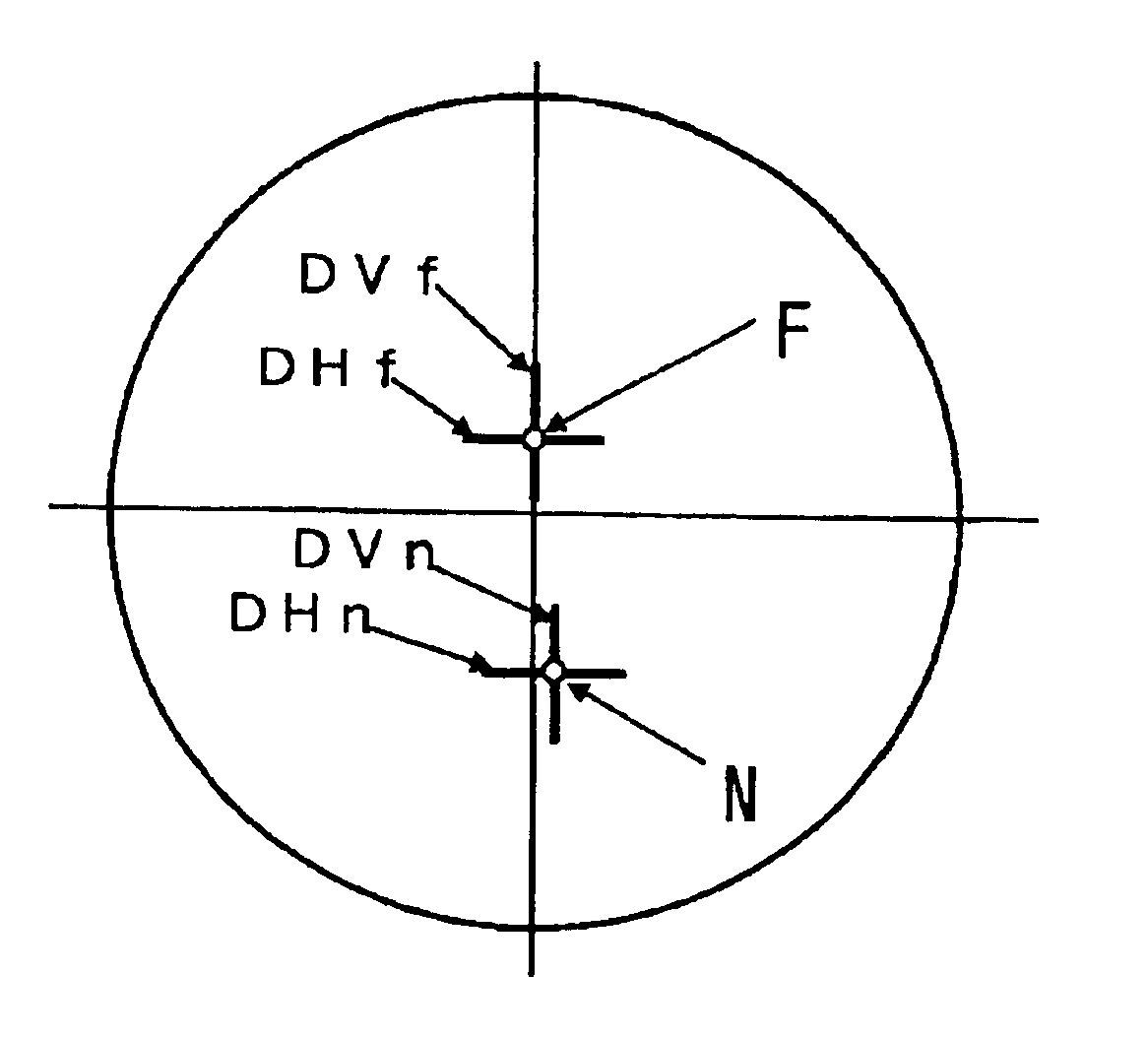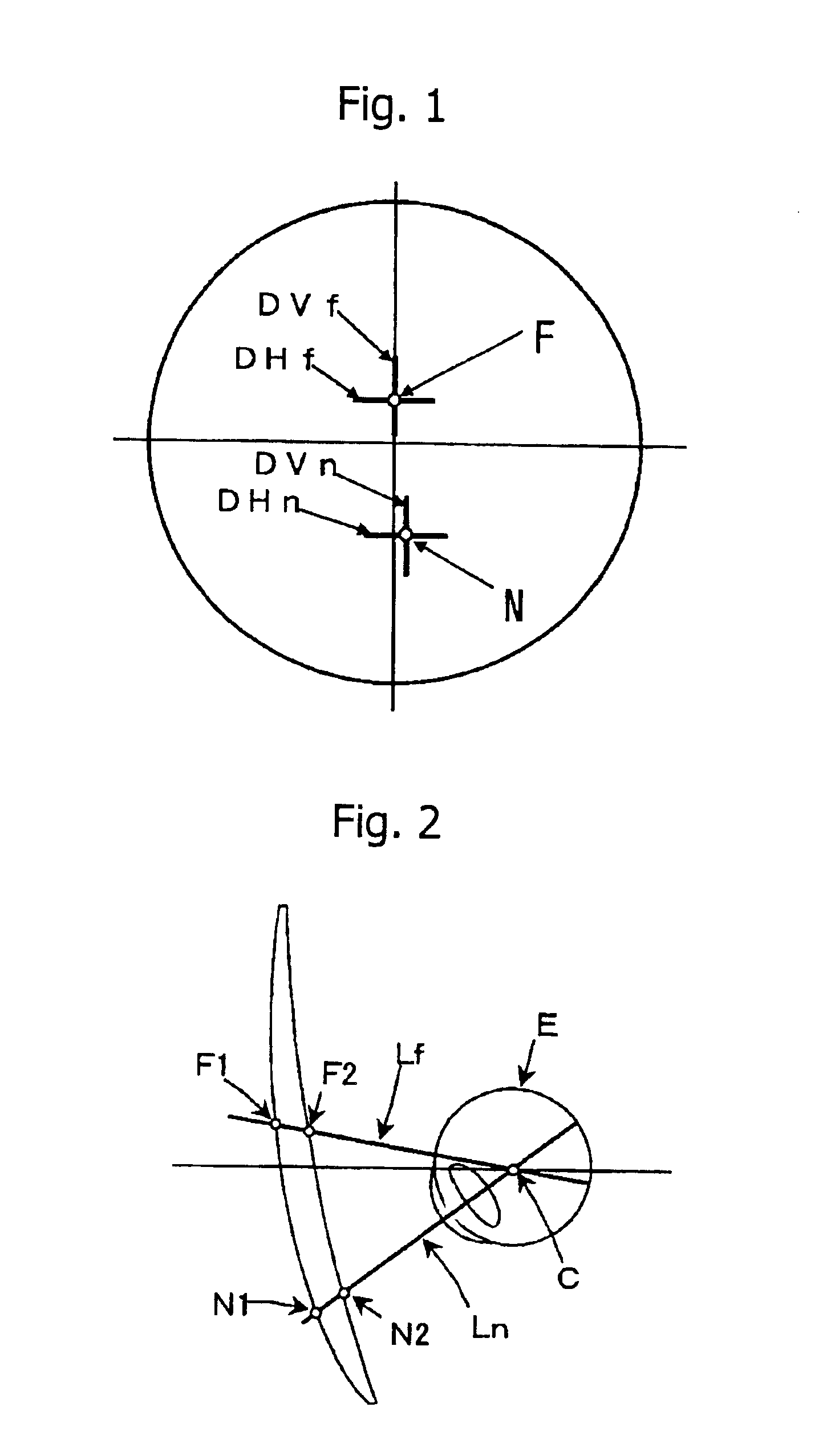Bi-aspherical type progressive-power lens
a technology of progressive power and lens, applied in the field of biaspherical type progressive power lens, can solve the problems of insufficient prior art from a viewpoint, inability to accurately calculate the “magnification, and wearer to feel distortion or sway of an image, so as to achieve excellent visual field, improve labor efficiency, and improve the effect of visual field
- Summary
- Abstract
- Description
- Claims
- Application Information
AI Technical Summary
Benefits of technology
Problems solved by technology
Method used
Image
Examples
example 1
[0141]Table 1-1 in FIG. 7 is a list regarding the surface refractive powers of Example 1 according to the present invention. The diopters of Example 1 correspond to S being 0.00 and ADD being 3.00, with three kinds of prior art examples having the same diopters being listed together for comparison. It should be noted that Prior art example A, Prior art example B, and Prior art example C correspond to a “convex surface progressive-power lens” in which the object side surface is a progressive surface, a “bi-surface progressive-power lens” in which both the object side surface and eyeball side surface are progressive surfaces, and a “concave surface progressive-power lens” in which the eyeball side surface is a progressive surface, respectively. Meanings of items used in Table 1-1 are as follows:
[0142]DVf1: surface refractive power in the vertical direction at a far vision diopter measurement position F1 on the object side surface,
[0143]DHf1: surface refractive power in the horizontal ...
example 2
[0181]Table 2-1 in FIG. 8 is a list regarding the surface refractive powers of Example 2 according to the present invention. The diopters of Example 2 correspond to S being +6.00 and ADD being 3.00, with three kinds of prior art examples having the same diopters being listed together for comparison. It should be noted that Prior art example A, Prior art example B, and Prior art example C correspond to a “convex surface progressive-power lens” in which the object side surface is a progressive surface, a “bi-surface progressive-power lens” in which both the object side surface and eyeball side surface are progressive surfaces, and a “concave surface progressive-power lens in which the eyeball side surface is a progressive surface, respectively. Meanings of terms such as DVf1 to DHn2 used in Table 2-1 are the same as those in the above-described Table 1-1. Graphs 2-1 and 2-2 are graphs showing the surface refractive power distributions along the main gazing lines of Example 2 according...
example 3
[0188]Table 3-1 in FIG. 9 is a list regarding the surface refractive powers of Example 3 according to the present invention. The diopters of Example 3 correspond to S being −6.00 and ADD being 3.00, with three kinds of prior art examples having the same diopters being listed together for comparison. It should be noted that Prior art example A, Prior art example B, and Prior art example C correspond to a “convex surface progressive-power lens” in which the object side surface is a progressive surface, a “bi-surface progressive power lens” in which both the object side surface and eyeball side surface are progressive surfaces, and a “concave surface progressive-power lens in which the eyeball side surface is a progressive surface, respectively. Meanings of terms such as DVf1 to DHn2 used in Table 3-1 are the same as those in the above-described Table 1-1 and Table 2-1.
[0189]Graphs 3-1 and 3-2 in FIG. 11 are graphs showing the surface refractive power distributions along the main gazin...
PUM
 Login to View More
Login to View More Abstract
Description
Claims
Application Information
 Login to View More
Login to View More - R&D
- Intellectual Property
- Life Sciences
- Materials
- Tech Scout
- Unparalleled Data Quality
- Higher Quality Content
- 60% Fewer Hallucinations
Browse by: Latest US Patents, China's latest patents, Technical Efficacy Thesaurus, Application Domain, Technology Topic, Popular Technical Reports.
© 2025 PatSnap. All rights reserved.Legal|Privacy policy|Modern Slavery Act Transparency Statement|Sitemap|About US| Contact US: help@patsnap.com



